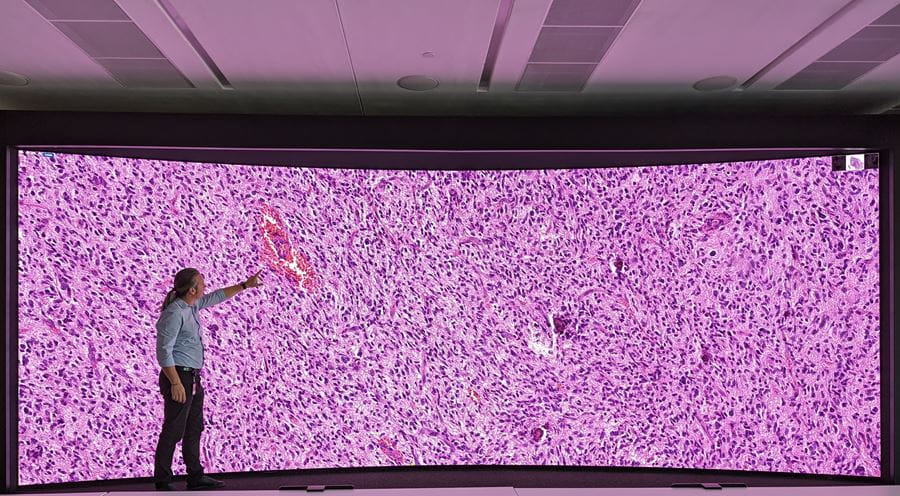INDIANAPOLIS—Indiana University School of Medicine Department of Pathology is launching a new Division of Computational Pathology and a Research Center for Federated Learning in Precision Medicine. Both will be led by Spyridon Bakas, PhD, an internationally recognized computational researcher who brings ten years of experience and NIH grant funding to this growing field that combines artificial intelligence and medicine.
“Computational pathology is a growing area of medicine around the world,” Bakas said. “The idea is to leverage information that exists within tissue slides that cannot be perceived by the naked eye. After being digitized, the clinical pathologist can identify cues that are visually interpretable, whereas computational methods can unlock sub-visual cues revealing patterns of diagnostic, prognostic, and predictive value. Recent technological advancements have generated an amplitude of data that burden the current pathologists and technicians, so we need these computational tools to assess all this information more efficiently and effectively.”
Bakas joined IU on September 1 as the Joshua Edwards Associate Professor of Pathology and brings with him a team of six researchers that span across various ranks. He and the Department of Pathology are actively recruiting for several more positions, from assistant professors to data analysts and postdoctoral researchers, to serve as leaders in the promising field of computational pathology and federated learning.
The goals of the new division and research center include:
- Devise solutions to clinically relevant questions while contributing to the optimized use of health care professional skillsets while decreasing cognitive and clerical burden
- Expedite digital service, device, and drug discovery across the school
- Yield new biological and clinical insights into pathological processes
- Facilitate multi-institutional collaborations without sharing patient data, thereby overcoming legal, privacy and data ownership challenges.

Bakas will hold secondary appointments, indicating the vision of the new division and research center to work collaboratively and closely with other areas of the school, including the Department of Biostatistics and Health Data Science, Department of Radiology and Imaging Sciences and the Department of Neurological Surgery. They will also work with other schools within Indiana University, such as the Department of Computer Science in the Luddy School of Informatics, Computing and Engineering.
“We bring expertise in machine learning for health care data, while other collaborators will bring complimentary domain knowledge and expertise in privacy and security,” Bakas said.
“The arrival of Dr. Bakas is a tremendous opportunity for the department and for IU School of Medicine to launch into the sphere of computational pathology, which unlocks new ways of examining cells, tissues and organs in health and disease,” said Michael Feldman, MD, PhD, chair of the Department of Pathology and Laboratory Medicine. “We will be able to leverage the significant resources that already exist at the school and the university to build long-term partnerships with other departments, such as radiology.”
Bakas and his team have published several major research studies, including the largest real-world federated learning study ever conducted, which focused on health care for brain tumor patients. Federated Machine Learning provides an alternative paradigm for accurate and generalizable machine learning by only sharing numerical model updates across multiple data sets.
“We look forward to extending that further, not only in more research studies, but with collaborators within IU and outside of the university with other industry collaborators and research institutions,” Bakas said.
About Indiana University School of Medicine
IU School of Medicine is the largest medical school in the U.S. and is annually ranked among the top medical schools in the nation by U.S. News & World Report. The school offers high-quality medical education, access to leading medical research and rich campus life in nine Indiana cities, including rural and urban locations consistently recognized for livability.




